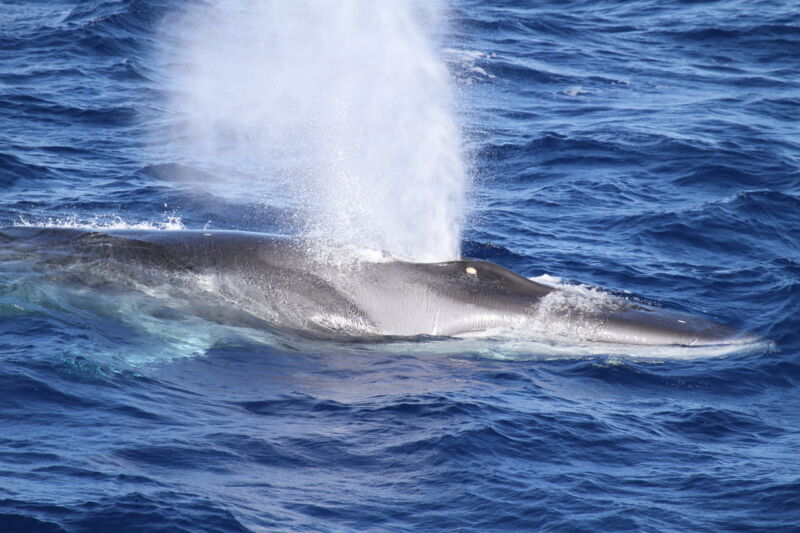Using whale songs to image beneath the ocean’s floor

People tend to think of seismic waves as little more than signals of tectonic events, like an earthquake or lava shifting under a volcano. But these vibrations are also our best way of getting a clear picture of our planet's internal structure. By watching how the vibrations' paths shift as they encounter different materials, we can get a picture of where different rock layers meet, where rock becomes molten, and more.
In some cases, we get this picture by waiting for a natural event to produce the seismic waves. In others, we get impatient and set off explosive charges or use a powerful sound-making device. Today, Václav Kuna and John Nábėlek of Oregon State University are describing yet another option: waiting for a whale to float by. Using the songs of passing fin whales, the researchers were able to reconstruct the upper layers of the seafloor off the coast of Oregon.
Quite a song
The song of a fin whale is not exactly the sort of thing you'd typically describe as musical. It's generally in the area of 20Hz, which sounds more like a series of clicks than a continual sound, and the whales produce it in second-long bursts separated by dozens of seconds. But they are loud. A guidance on hearing risks places danger at any level above 80 decibels and the loudest concerts as hitting roughly 120 decibels. A fin whale's song can be in the neighborhood of 190 decibels, and it typically goes on for hours.
Read 9 remaining paragraphs | Comments
source https://arstechnica.com/?p=1741444